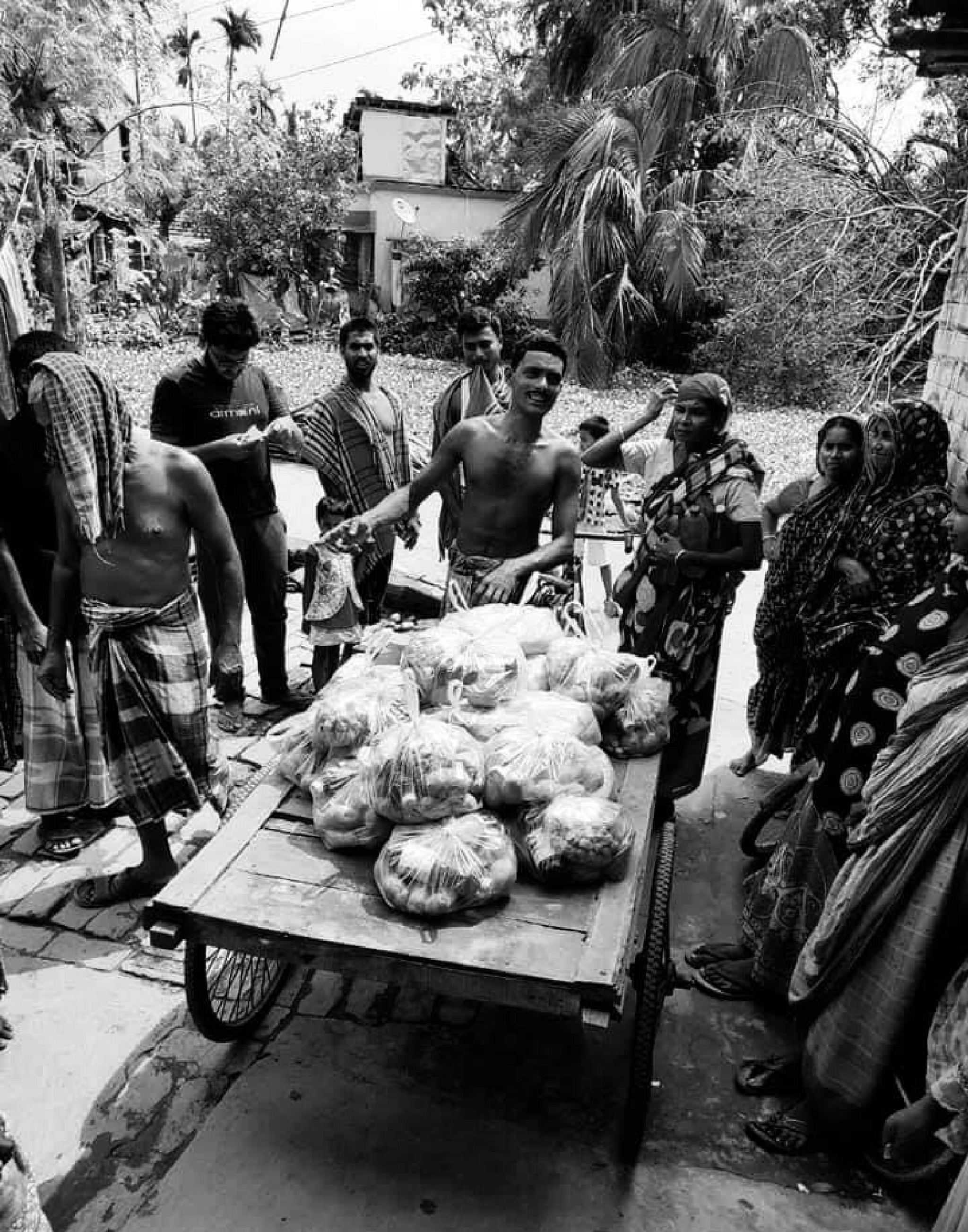What Kolkata’s solidarity networks can teach London about community care

In Kolkata, India, solidarity networks effectively mobilised community support in response to the Covid-19 pandemic, including the Quarantined Student Youth Network (QSYN). All photography courtesy of QSYN
‘Social distancing’ during the Covid-19 pandemic became extremely important to reduce the spread of the virus. However, many activists worldwide expressed their discomfort around the term ‘social distancing’; instead, they preferred ‘physical distancing’ as non-exclusionary vocabulary. Because while physical distance was critical, social connection remained important – and flourished.
Despite avoiding physical touch, many people still showed a willingness to volunteer their time and energy to provide tangible, informational, financial and emotional support to other people, particularly those with vulnerabilities, showing care through material and emotional labour. This fundamental care for others was pivotal for the formation of what we call ‘solidarity networks’ across the world.


Building on his experience of participating in a solidarity network in London, Dr Raktim Ray, a Lecturer at The Bartlett Development Planning Unit (DPU), partnered with Dana Sousa-Limbu (also at DPU), Dr Amit Chatterjee (School of Planning and Architecture, Bhopal) and Koumi Dutta, a volunteer from the Kolkata-based solidarity network Quarantined Student Youth Network (QSYN), to embark on a research project comparing solidarity networks in the cities of London and Kolkata. The project received funding from the UCL Global Engagement Funds and the DPU Internal Grant.
The research took place between February and July 2021, including ethnographic fieldwork with Covid-19 mutual aid groups in London and QSYN in Kolkata. We encountered difficulties searching for interview participants from Covid-19 mutual aid groups in London, however, as many of the groups were no longer active after November 2020. In contrast, QSYN was still operational in Kolkata.

Kolkata's Quarantined Student Youth Network in June 2020
QSYN operated as a collective of student volunteers
As a consequence of the two different contexts, the research methodology for London and for Kolkata differed. However, these differences also opened up opportunities to explore how solidarity networks organised themselves and operationalised their resources differently, as well as how communities perceived their operations differently and the implications on the types of care provided by these networks during the pandemic.


In London, Covid-19 mutual aid groups flourished when communities from neighbourhoods volunteered and aimed to help people with grocery shopping and picking up prescriptions. However, one of the volunteers in a Covid-19 mutual aid group in Bethnal Green, east London, told us that the network could not develop trust with the community as they never had a foothold within the community before the crisis. This case study contrasts with QSYN in Kolkata, where the network operated as a collective of student volunteers who already had pre-existing relationships with the communities they provided care for. QSYN volunteers also identified this care work as part of a broader political project for practising ‘horizontal’ forms of human relations and sharing.

Kolkata's Quarantined Student Youth Network in June 2020
Communities connected their struggles with the care work
In London, Covid-19 Mutual Aid UK, the umbrella body for the various mutual aid groups, did not provide tangible resources from ‘the top’, but it did create connections between groups to form a broader solidarity network where groups could learn practices of care from each other and exchange knowledge. This increased awareness that mutual aid groups were emerging across London gave rise to insurgent practices of care from ‘the bottom’, with communities offering their assistance to those in need.


From the research, it seems clear that QSYN had a distinct set of objectives to provide care through a single entity made up of volunteers with a common interest in helping those who were marginalised and made vulnerable by the pandemic. QSYN received more than INR 50,00,000 (£50,000) from online crowdfunding, which it predominantly used to buy groceries and provide personal protective equipment (PPE) kits to communities. QSYN also established community kitchens to provide meals within communities and they created learning environments (‘Prithibir Pathshala’) within marginalised communities.
Although QSYN initiated these practices of care, it is important not to discount the agency of, and resource mobilisation within, the communities themselves. On many occasions, the people who pulled hand-driven vans for the distribution of goods ate at the community kitchens, and were also involved in prioritising needs and redistributing surplus resources between community kitchens. On one occasion, a person allowed QSYN to use his closed warehouse to run ‘Prithibir Pathshala’, and the community repaired that warehouse to accommodate local children to participate in communal learning. However, with London’s Covid-19 mutual aid groups, there was more of a binary relationship between the caregiver and receiver.

Kolkata's Quarantined Student Youth Network in June 2020
Solidarity networks are an essential infrastructure for urban living
One QSYN volunteer explained that shared histories of suffering were also pivotal for the success of this solidarity network, saying that communities connected their struggles with the care work. Most of the marginalised communities where QSYN operated consist of climate change refugees who encountered multiple occasions of displacement.
Our research has highlighted that we need to understand care beyond economic terms. We must dissect the binary of caregiver versus receiver and acknowledge the agency of people within communities to create their own practices for caring and solutions to even the world’s worst crises. Solidarity networks are an essential infrastructure for urban living through which a politics of caring and sharing can be enacted to co-create a more socially ‘just’ world.




